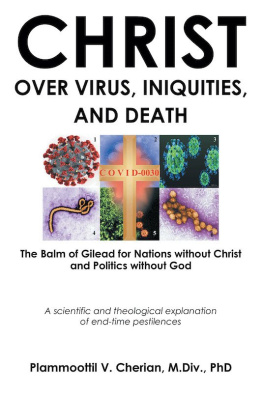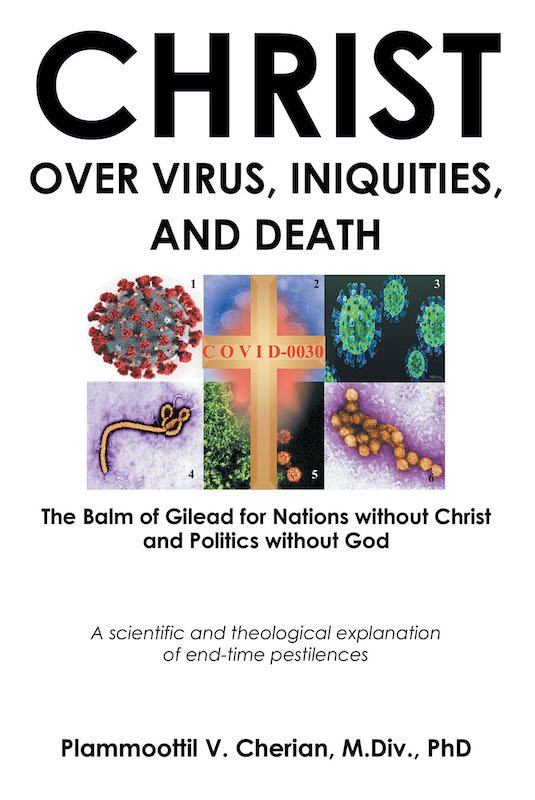Chapter 1
Emerging Diseases
I am the Lord your God, who brought you out of the land of Egypt, that you should not be their slaves; I have broken the bands of your yoke and made you walk upright. But if you do not obey Me, and do not observe all these commandments, and if you despise My statutes, or if your soul abhors My judgments, so that you do not perform all My commandments, but break My covenant, I also will do this to you: I will even appoint terror over you, wasting disease and fever which shall consume the eyes and cause sorrow of heart .
Leviticus 26:1316
When I shut up the heavens so that there is no rain, or command the locust to devour the land, or send pestilence among my people, if my people who are called by my name humble themselves, and pray and seek my face and turn from their wicked ways, then I will hear from heaven and will forgive their sin and heal their land.
2 Chronicles 7:1314
Emerging Infectious disease (EIDs) are diseases that have newly appeared in a population or that has been known for some time but was not active as in the past, but rapidly increasing in incidence or geographic range. Others define emerging infections as new emerging or drug-resistant infectious agents whose incidence in humans has increased within the last two decades, or whose incidence threatens to increase in the near future. Since 1967, there have been more than eighty-five new pathogens described as diseases caused by novel viruses, bacteria, protozoan, and helminth parasites.
Emerging infectious diseases have been a growing concern of the global public health professionals, World Health Organization (WHO), the Centers for Disease Control of USA, and health department of every country and state globally are keenly evaluating each case. This has been a global concern and the awareness of these novel diseases and strategies to control or prevent them have been heightened since 1976 with the appearance of Ebola virus. Ebola named after the Ebola River in Zaire where it first emerged in Sudan and Zaire, with the first outbreak infecting over 284 people, with a mortality rate of 53 percent). A few months later, the second Ebola virus emerged from Yambuku, Zaire, Ebola-Zaire (EBOZ).
The National Institute of Allergy and Infectious Diseases (NIAID) of the United States defines emerging infectious diseases in three categories:
- Outbreaks of previously unknown diseases
- Known diseases that are rapidly increasing in incidence in the last two decades
- Persistence of infectious diseases that cannot be controlled
Some other emerging diseases include HIV/AIDS virus (1981); hepatitis C virus (1989), which is the most common cause of post-transfusion hepatitis worldwide; Influenza A, an avian pathogenic virus first isolated in humans (1977); Legionella pneumophilia or Legionnaire disease (1976); Escherichia coli strain 0157:H7, causing hemolytic uremic syndrome (1982) that resulted in the recall of millions of pounds meat and produce; Lyme disease (1982), caused by Borrelia burgdorferi ; Spongiform encephalitis, which is a variant form of Creutzfeldt-Jakob disease caused by prions in humans (1996), which is a disease primarily of cattle causing mad cow disease, first detected in 1980s in United Kingdom and Europe. The emerging diseases that appeared in the new millennium are Middle East respiratory syndrome (MERS 2015), severe acute respiratory syndrome (SARS 2003), West Nile virus (1999), Zika virus (20072016), and the most recent, the deadliest of all of 20192020 the coronavirus, the disease caused, which is named COVID-19, first appeared in Wuhan, China in December 2019. While the dates in brackets indicates prominent cases of multi-infection in a country, the causative pathogen (virus or bacteria) may have been identified earlier.
In addition to the above-mentioned pathogens and the diseases they cause, there are known infections that are reemerging as new virulent strains by undergoing transformation by various molecular mechanisms in their genome. An example is the normal Staphylococcus aureus that has become highly resistant to drugs and now known as methicillin-resistant Staphylococcus aureus (MRSA), which is possibly arising as a nosocomial infection.
Emerging infectious diseases are estimated to be about 12 percent of all human pathogens. The United States CDC gives detail of emerging diseases through their publication Emerging Infectious Diseases , which has pertinent information in each issue. Remerging diseases are those reappear after they have been on a significant decline for a long period of time. Their resurgence may be due to various factors such as lapse in evaluation of public health measures once they subsided. No microbial pathogen, virus, or bacteria is likely to be removed 100 percent from an individual even after one is cured of the infection. For example, chicken pox, caused by Varicella zoster virus (VZV), is a mild disease, rather a nuisance disease, in most people. But in babies, adolescents, and immunocompromised adults, it can be serious and life-threatening. People who were healed of the chickenpox have hopefully lifetime immunity, but that does not ensure that 100 percent of the virus had been eliminated from the individual.
While the antibody produced by the plasma cells of the B-cell lineage is powerful and potent against any immediate reinfection, viruses like chickenpox virus could be sequestered in the person. For chickenpox virus, it is proven that the virus has a predilection for the sensory endings of the cutaneous branches of the thoracic and trigeminal nerves, where they become dormant for a long time, perhaps ten to thirty years or longer. That means the individual is a carrier of chickenpox virus. While one patient is such a carrier, he/she may not pass chicken pox to others because the residual viruses are in latent stage. However, the residual sequestered chickenpox virus within the original patient after many years could reemerge, causing shingles in the same person, also known as herpes zoster or varicella-zoster . They are dormant in the ganglia of thoracic spinal nerves. The virus is believed to migrate out of the ganglion and through circulation come to the skin, where their replication results in creating blistering lesions of persistent vesicles. However, the varicella-zoster virus is contagious, and the virus from shingles blisters can spread the virus to other individuals, causing them to develop chickenpox or shingles.
Remerging infections happen when new strains or variants of known disease-causing organisms appear due to several factors such as mutation and overuse of antibiotics, which has led to bacteria to become resistant to drugs by molecular mechanisms. The resistance developed by pathogens allows a return of diseases that once were treatable and controllable, thus becoming uncontrollable. Reemerging diseases include malaria, tuberculosis, cholera, pertussis, influenza, pneumococcal disease, and gonorrhea. Some emerging diseases are zoonotic, transmitted from animal reservoirs in which many pathogens are harbored with possible occasional transmission into human populations. The present COVID-19 pandemic is speculated to have originated from exotic animals that were eaten by some ethnic groups and sold in food markets in Wuhan, China. There is also report that the virus got out a laboratory in Wuhan, which is closed down, and has yet to be proved.
Microbial infections depend on a minimum infective dose (MID) of the pathogen to cause an infection. The MID is the number of pathogens required to infect a host varies dramatically across the numerous microbial species of pathogens. It has recently been predicted that infective dose will depend upon the mode of action of the molecules the pathogens use to facilitate their infection.













